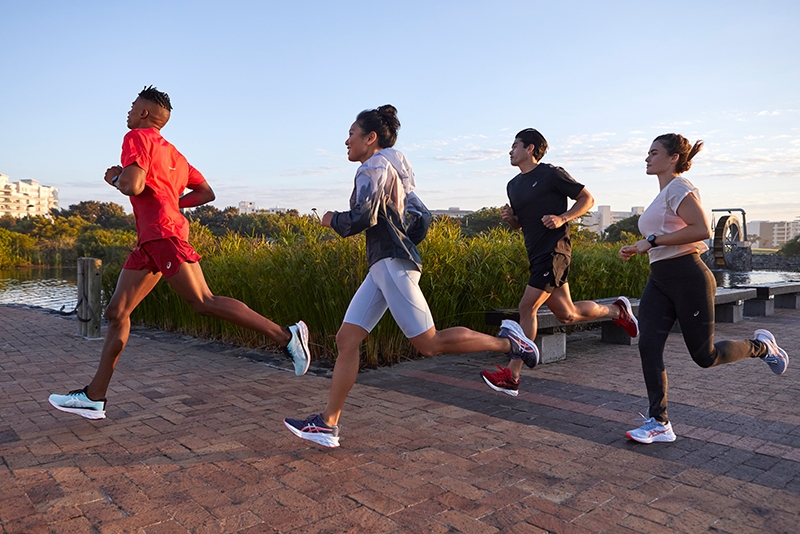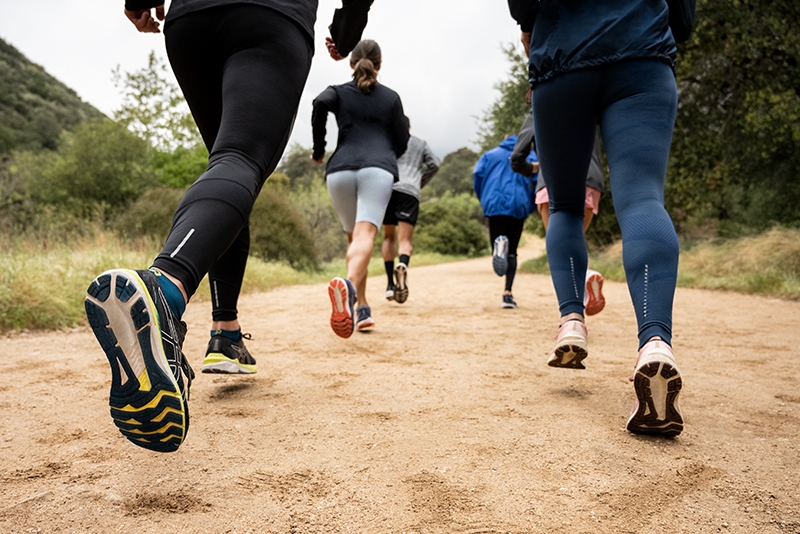To avoid injury and to put your strongest foot forward, follow these four steps for the best natural running experience.
1. Start Out Gently
Your natural running shoes are designed for a more lightweight, flexible and responsive running experience. This means they contain less cushioning and support. Because of this, you may initially feel more strain on the muscles and tendons in your feet.
It’s normal to experience more stress on your calf muscles and Achilles tendons in the first few runs. After a while they’ll adapt and get stronger.
When you begin running naturally, make sure you:
- Run shorter distances – Aim for two to three miles per session or per week
- Do the math – Each half mile is biomechanically equivalent to around one mile in your usual running shoes
- Know your shoes – The lower the heel drop and midsole level of your natural running shoe, the better your training condition needs to be

2. Add Some Variation To Your Running Regimen
Natural running is best seen as one part of a varied training regimen. Some people equate natural running with low heel drop shoes, but we prefer to think it’s much more important to create variation in your training, routes, surfaces and shoes.
Use natural running to create variation in your training, but make sure you also:
- Run natural no more than twice a week – Only a third of your weekly running load should be done with minimalist gear
- Wear your natural running shoes for everyday occasionally – You’ll enjoy the comfort, and your feet will adapt more easily to the minimalist shoe concept
3. Know Your Limits
Natural running shoes have a lower heel drop to promote midfoot and forefoot running. For some runners, natural shoes may do more harm than good.
You need to take extra care if you have:
- Flat feet or are overweight
- Orthopaedic inserts
- Hallux Rigidus (stiff big toe)
- Existing Achilles Tendon issues

4. Get The Right Natural Running Shoe For You
Much like a normal running shoe, it’s important to have one that’s tailored to the way you run. ASICS offers a range of easy-running shoes that are perfect for natural running for everyone from entry-level to more expert models for elite runners.
If you’re a casual runner...
- Training load: 1-2 sessions per week, total 10 miles
- Primary shoe: GEL-NIMBUS
- Easy-running shoe: GEL-EXCITE
If you’re a serious runner...
- Training load: 2-3 sessions per week, total 15 miles
- Primary shoe: GT-2000
- Easy-running: GEL-Kayano
If you’re an elite runner...
- Training load: 4-5 sessions per week, total 45 miles
- Primary shoe: GEL-DS TRAINER
- Easy-running: FLYTEFOAM Collection
Along with these steps to having the best experience for natural running, come shop our full collection of running gear and running clothing today!
